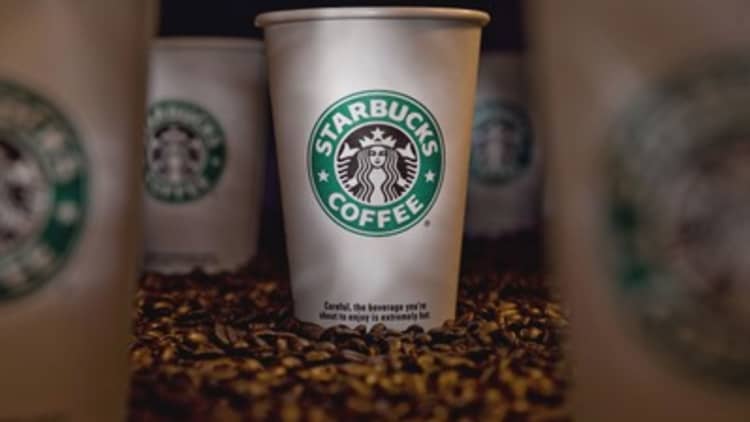In its 47-year history, Starbucks has transformed from a single coffee bean store in Seattle to a 30,000 cafe international coffee power house. But massive expansion hasn't come without growing pains.
It's no secret that Starbucks has been struggling to get U.S. customers to frequent its cafes more often. While sales have been positive, the number of customer visits continues to stagnate.
Same-store sales, a key metric in the restaurant industry, have dwindled over the last 12 months as competition heated up and customers were uninspired by some of Starbucks' limited-time offerings. While comparable-store sales exceeded expectations in the fourth quarter that ended Sept. 30, rising 4 percent, much of that was due Starbucks charging more for its lattes.
Under the careful watch of Howard Schultz, Starbucks pursued a strategy of aggressive expansion in the late '80s and early '90s. By the time the company went public in 1992, it had 165 stores.
Four years later, Starbucks opened its 1,000th location, including international cafes in Japan and Singapore. Growth was so rapid that, just two years later, Starbucks opened its 2,000th cafe.
While unit expansion helped boost sales throughout the last two decades — Starbucks has had positive same-store sales growth since 2010 — the company has now spread itself too thin.
With more than 14,000 locations in the United States alone today, Starbucks has cannibalized its own sales. The company is regrouping and rethinking its expansion. It is expected to shutter 150 underperforming locations in 2019, three times the amount it typically does.
Compounding its problems are changing consumer preferences, an issue CEO Kevin Johnson has addressed with investors. People are shying away from sugar-laden calorie bombs, which happen to be one of Starbucks' staples. In 2015, sales of Frappuccinos were 14 percent of Starbucks revenue. However, in the first half of 2018, Frappucino sales were down 3 percent — and accounted for only about 11 percent of the company's revenue.
Making matters worse, Frappuccino sales also were hurt by a lack of innovation, analysts said.
To remedy this, Starbucks has shifted its strategy to include more cold beverages like teas, Starbucks Refreshers energy drinks and cold-brew coffee. Around 50 percent of all Starbucks purchases include a cold beverage, the company said when it met with analysts in December.
Starbucks executives also plan to leverage increased use of its mobile app for ordering and a rising number of loyalty members. It also recently announced a new U.S. delivery partnership with Uber Eats.
Another facet of Starbucks' strategy is its Reserve Roasteries — massive 20,000-square-foot stores that are designed to be tourist destinations. Here, Starbucks can experiment with different brewing methods and create innovative beverages.
But Starbucks isn't out of the woods yet. While the company reaffirmed its financial targets last month for fiscal year 2019, it also lowered its long-term earnings forecast.
During its analyst meeting, the company said it expects earnings per share on an adjusted basis to rise at least 10 percent a year over the longer term. Previously, the company predicted 12 percent growth on this basis.
Starbucks' new chief financial officer, Pat Grismer, also said its coffee alliance with Nestle will add to its adjusted earnings per share in fiscal years 2020 and 2021, helping to boost its growth to at least 13 percent in those two years.
Overall, it's emerging that Johnson is planning to take a more measured approach to growth during his tenure as CEO.
Shares of the coffee company are up more than 7 percent over the past year.



